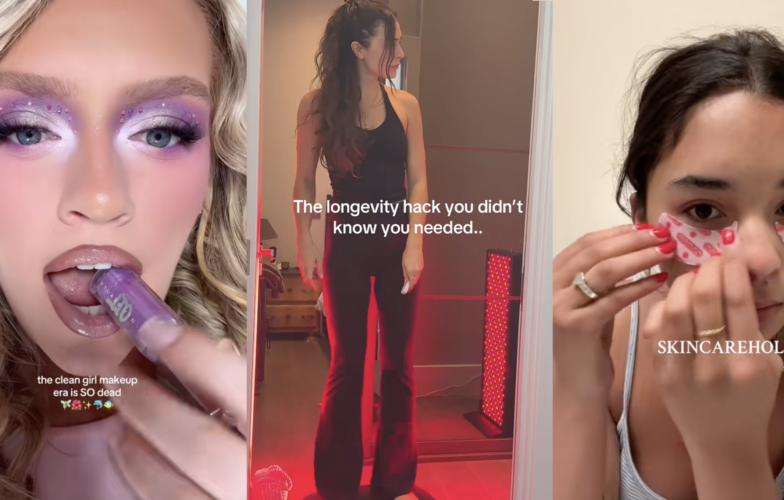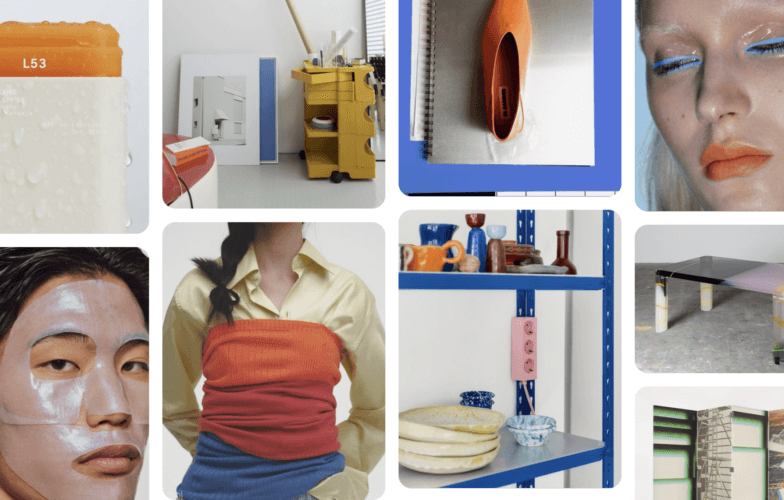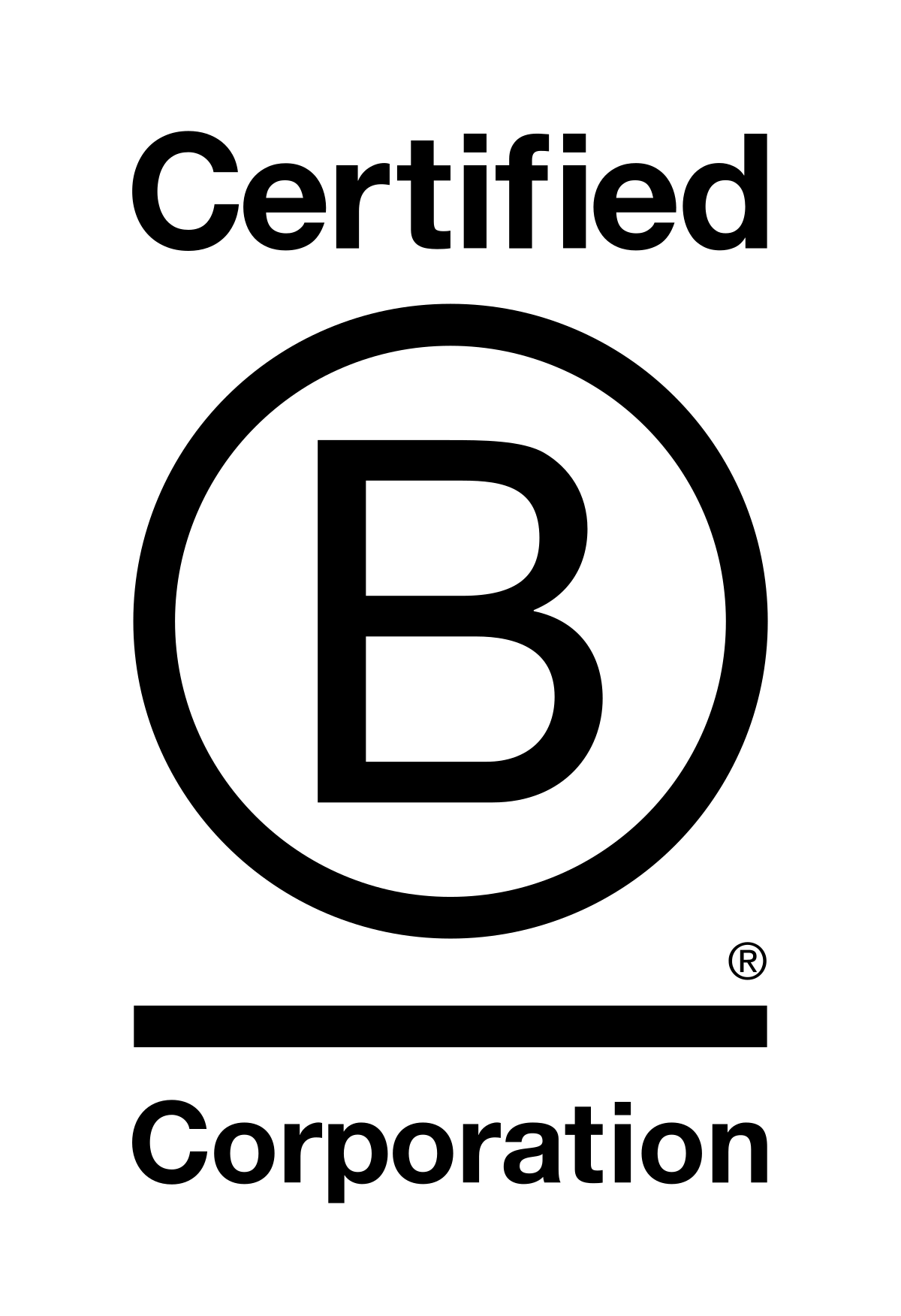
TikTok Beauty Trends – May 2025
Every month NellyRodi beauty experts show you a selection of the most interesting trends on TikTok. Here’s the update for May 2025!
Yarn makeup or 2025’s strangest (and most fascinating) tutorial
In March, Canadian makeup artist Anna Murphy posted a TikTok tutorial in which she glued white yarn in a spiral on her face before applying makeup. The video hit 52 million views with 5.8 million likes, and #yarnmakeup went from just another weird thing to a trending beauty phenomenon.
@annamurphyyy I can’t move my mouth 😭#makeup #makeupartist #creativemakeup #mua #sfxmakeupartist ♬ Love Me Not – Ravyn Lenae
The process seems simple, but it requires real patience to apply a uniform white base, use prosthetic glue and then, inch by inch, place the yarn from the nose all the way to the hairline. Once the yarn is arranged, cosmetics, blush and lipstick are layered directly on the yarn. The effect is quite spectacular, but not so comfortable. Those who’ve tried the technique talk about feeling suffocated or the long, sometimes painful process of removing yarn and makeup.
The trend quickly branched out. Eleanor Barnes (@snitchery) created a version inspired by a sleep-paralysis demon, and Zaynna (@itszaybaybay) pushed the concept to a total look with face, hair, nails and crocheted outfit, garnering over 13 million views. 18-year-old Nettie Lombardi devoted over six hours to recreate the Coraline blue-violet portal, proof that precision is more important than comfort.
@itszaybaybay One of my fave things about this trend is seeing how so many creatives interpret this trend. It’s times like these that I love seeing the makeup community come together and create looks together 🥹🩷 #makeup #makeuptutorial #makeuptransformation #yarnmakeup ♬ original sound – ZAYBAY
So why the hype? After the “clean girl” aesthetic and express routines, this makeup emphasizes craftsmanship: manual work, thick texture, and extended time. It echoes the rise of craftcore and the post-pandemic boom in creative hobbies. Visually, the wool creates a slight unease: the face looks like a doll or an animated character — a far cry from the smoothing AI filters. This contrast intrigues viewers and encourages them to try their own takes, whether inspired by horror films or cartoons.
The trend is already redefining beauty ideals, and aficionados are looking for ultra-white foundations that stick to yarn, gentler glues, and pigments to cover a fiber surface that can be removed painlessly. For brands, this is a clear signal: either offer ready-to-use kits with glue, matching yarn and an adapted palette or formulations designed to adhere to unusual textures as a way to transform a simple trend into a new arena of creative expression. The value isn’t just in the final result, but also in the application methods, the materials used and the time invested to create an original look, even if it only lasts for an evening.
2) The caveman method: the (already disputed) return to naked skin
TikTok’s most heavily debated trend today isn’t a futuristic serum … it’s the exact opposite. The caveman method consists of stopping everything: cleansers, creams and sometimes even water. Influencer Tia Zakher boasts six weeks of putting nothing on her face, and her video has 9.7 million views and has sparked a storm of skepticism. Many consider that promoting renewed skin by doing absolutely nothing is rage-bait.
@tiazakherit’s SO tempting to not pick at it but so far so good 💪♬ I Love It (feat. Charli XCX) – Icona Pop
The program advises either rinsing only with water or the more radical no-contact protocol. Feedback is far from unanimous. After 30 days with no skincare routine, some users describe blocked pores, whiteheads, cystic acne and sallow skin. Others who are prone to eczema or allergies report improved comfort, but admit they still use sunscreen as a bare minimum. Between contradicting accounts and suspicious before/after photos, it’s difficult to separate the placebo effect from real improvements.
Dermatologists are clearly more critical: no study proves that a complete cessation regenerates the skin barrier. Without cleaning, a buildup of sweat, pollution and microbes can happen, encouraging infections, fungus or dermatosis neglecta, a thick layer of dead cells on skin that’s never cleaned. In particular, avoiding sunscreen increases the long-term risks of brown spots, premature aging and skin cancers. In summary, completely bypassing skincare routines may eliminate an extravagant amount of products, but it’s neither hygienic nor sustainable.
@seitanism__No hate obv but seeing it made me need the most instantly gratifying exfoliation possible♬ What Was That – Lorde
Why, despite all this, is the idea still attractive? People are tired of 15-step routines, rising prices, the appeal of an anti-consumerism stance, and a public eager to test for themselves “just how far you can go.” The regimen has become a crash test: if skin survives doing nothing, then which products deserve a place on the shelf?
The question is already getting brands’ attention. Short formulations for repairing the skin barrier, simplified diagnoses and cleanser-moisturizing-sunscreen trios are becoming more important. The promise is no longer to increase the number of steps, but to prove that each product provides measurable value and to remind consumers that minimalism does not mean zero care. Because between excess and absolute zero, it’s the practical benefits that make the difference.
Messy girl or clean girl?
A new beauty trend is creating division in TikTok’s beauty addict community: the messy girl vs. clean girl confrontation. These two esthetics are worlds apart, but they translate the same search for a new take on minimalism somewhere between absolute control and letting go with confidence.
We’re already quite familiar with the clean girl. She has glowing skin and impeccably styled eyebrows, she drinks green smoothies, and her bed is perfectly made. She’s the ultimate Pinterest girl, the ideal of a perfectly controlled lifestyle with no loose ends. But now a new wave, the messy girl, is threatening this glossy perfection.
@herstoryofficiel La Clean Girl ? Merci, mais on a fait le tour. Teint glowy, vie millimétrée et smoothie vert, ça va deux minutes. 2025 signe l’entrée fracassante de la Messy Girl : un peu bordélique, résolument imparfaite, mais 100 % vraie. #cleangirl #messygirl #trendingvideo ♬ son original – Herstory
Does she have unstyled hair, smudged eyeliner and chipped nails? Yes, but it’s on purpose. The messy girl celebrates a disheveled beauty that’s more visceral than esthetic. She doesn’t try to do things correctly, she’d rather be real. Following the example of personalities like Charli XCX, she symbolizes a new form of freedom that’s more rebellious, raw and alive. It’s a clear response to the pressure of productivity, the strict control of well-being routines and the sleek images on social media.
Which one are you? Here’s a test to find out:
@julialrnAlors vous êtes plutôt clean girl ou messy girl ? 😂🩷🩷♬ son original – Julia Lorino
The real question isn’t which camp you choose, but understanding what the two esthetics reveal about our relationship with beauty. The messy girl trend represents a kind of soft rebellion; it revels in imprecision, imperfection and unadorned truth. It’s a let-loose esthetic that’s almost therapeutic, and it demands the right to be beautiful without trying to please others. In opposition, the clean girl embodies excessive mastery and clean-lined elegance where every detail communicates calm, rigor and control. But she’s not refined in order to conform, it’s a vote for clarity in a chaotic world.
This is a strategic turning point for brands. It’s no longer about promising a perfect glow or flawless results, but about being a partner for real routines, moods and life cycles. Extreme beauty routines are giving way to targeted, adaptable ones that combine care, expression and emotion.
Because, at the core, today’s consumers don’t want perfection, they want permission.



